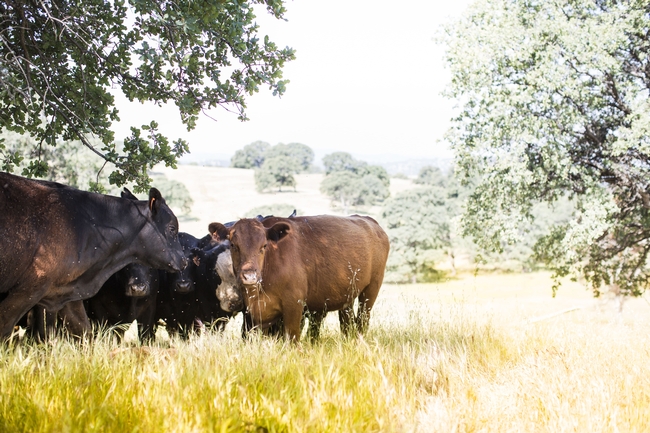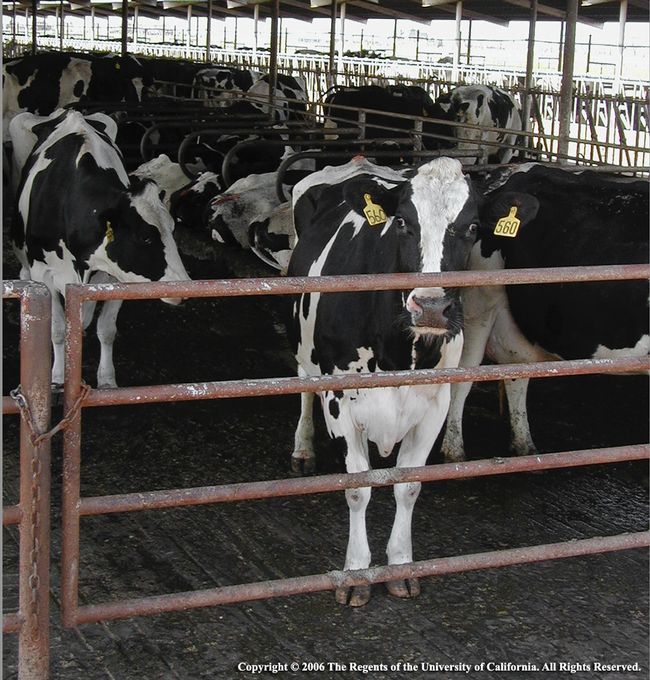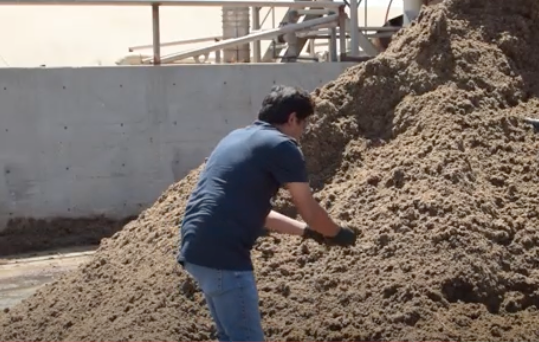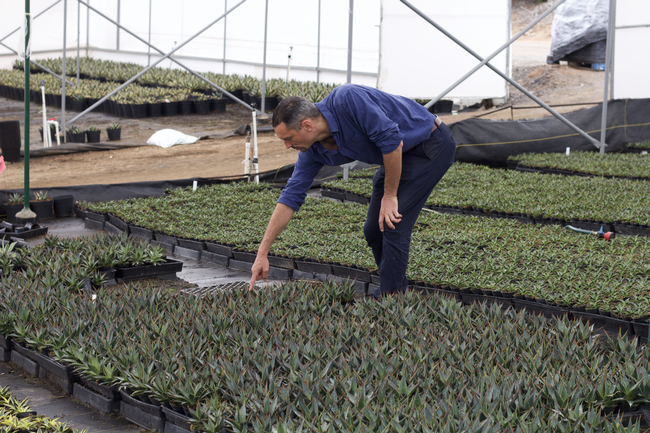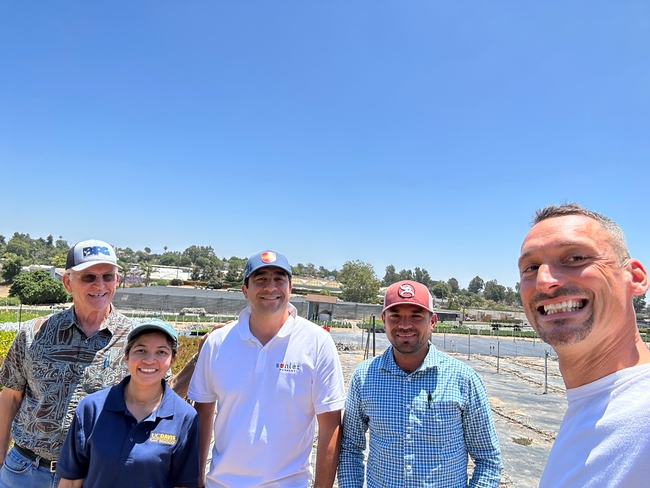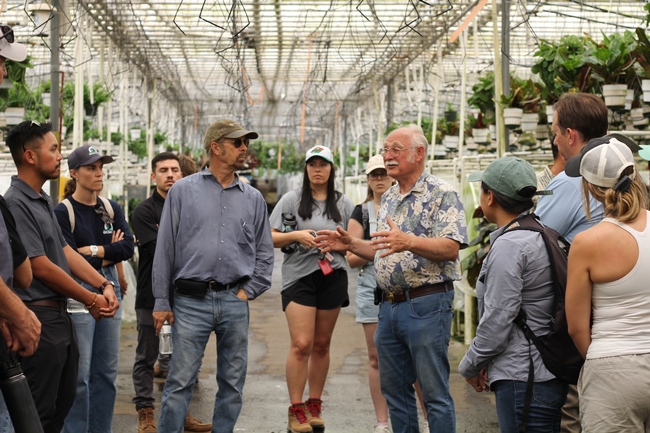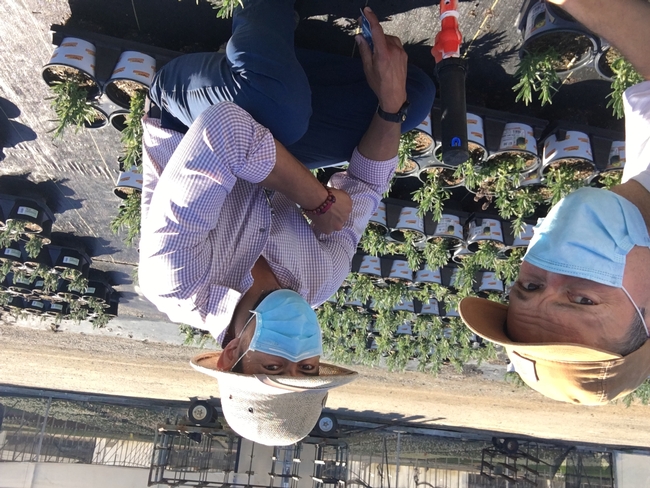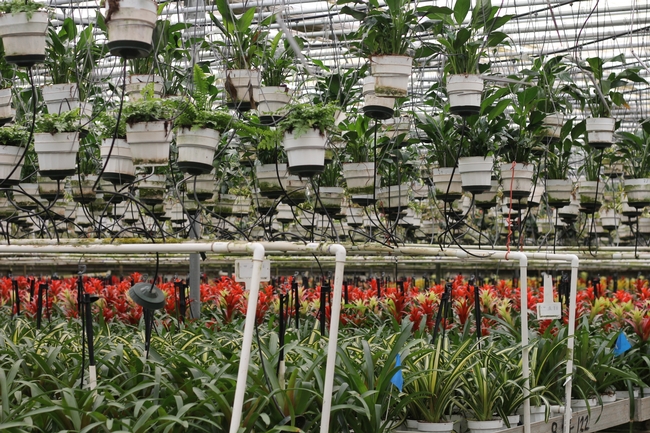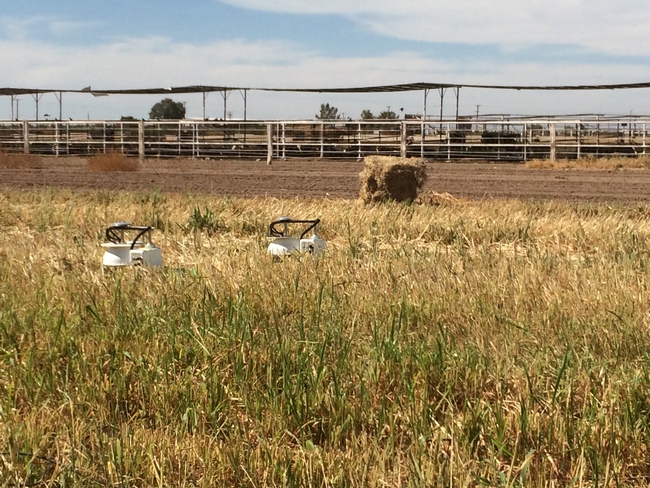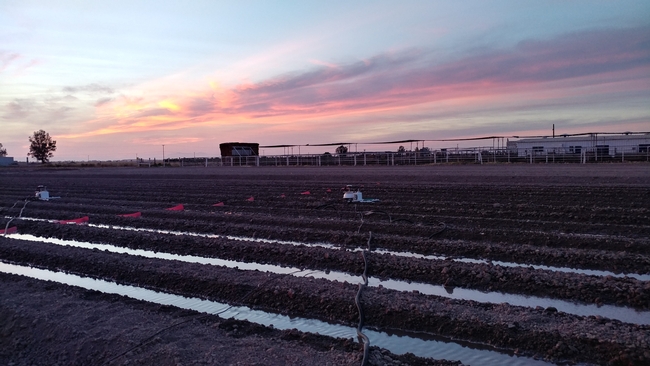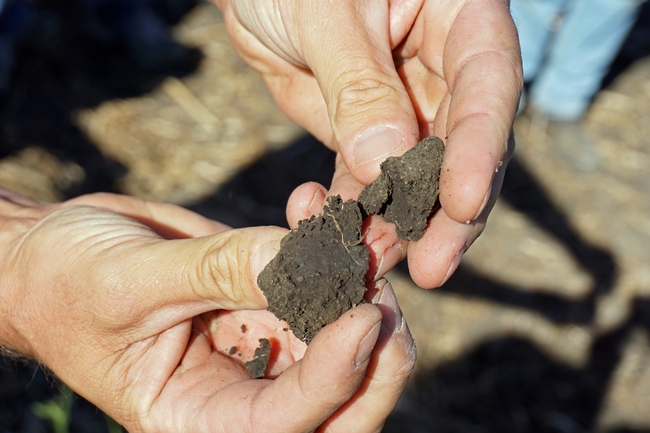Posts Tagged: greenhouse
Fighting fire with feeding
Are cattle a secret weapon for taking on California wildfires?
California's cattle ranchers contribute a significant amount to the region's culture, economy and food supply, but do they also inadvertently help to temper the wildfires that have been plaguing the state? And if so, is it a better alternative – environmentally speaking – to letting grasslands burn?
A new study published in the journal Sustainability delves into the topic, weighing the advantages – and disadvantages – grazing cattle bring to the table. Researchers, including scientists from University of California, Davis and UC Agriculture and Natural Resources, set out to calculate the greenhouse gas emissions of cows consuming vegetation that would otherwise burn in wildfires. Then they estimated the GHG emissions that would result should that forage be untouched and therefore, consumed by fire, eventually comparing the two.
Feeling the burn
Given the severity of California's recent wildfires and the belief they will continue and even escalate in the near future, it's a discussion worth having, said Frank Mitloehner, an expert in animal agriculture and air quality from UC Davis, director of the CLEAR Center and one of the researchers who contributed to the peer-reviewed article.
“Each year from 2010 to 2020, California lost on average 89,000 acres of grassland to wildfires,” said Mitloehner, who is also a Cooperative Extension specialist. “In addition to the obvious disruption and devastation they caused, the fires spewed greenhouse gases and harmful particulate matter such as black carbon into the air and into our atmosphere. Those alone threaten climate health and human well-being.”
A fast and furious gas
Cattle are adept at eliminating herbaceous fuel as they graze. However, at the same time, their specialized digestive system produces methane that is expelled most often in the form of enteric emissions … more commonly known as belches. By way of background, methane is a potent greenhouse gas that warms the atmosphere at 25 times the rate of carbon dioxide over 100 years. But it's only in the atmosphere for 10 to 12 years after it's emitted. Following that, it's broken down into carbon dioxide and water vapor.
For that reason, Mitloehner refers to methane as a “fast and furious” gas. Furious because it warms with a vengeance and fast because it does so for only a short time, especially when compared to carbon dioxide. Furthermore, because of the biogenic carbon cycle, whereby plants extract carbon dioxide from the atmosphere for photosynthesis, the warming of methane and its byproducts can end entirely when it's hydrolyzed and used by plants.
How researchers calculated emissions
In order to determine if grazing, methane-emitting cattle are better for the atmosphere than burning grasslands, Mitloehner and the other researchers employed a method known as “Monte Carlo simulation,” a mathematical technique used by scientists to predict outcomes of an uncertain event.
Looking exclusively at methane emissions, they found it's better to have cows eat vegetation than to have wildfires burn it. Granted, it's only marginally better, but when one considers other advantages of animal agriculture and conversely, other disadvantages of widespread, uncontrolled fire, the conversation suddenly shifts.
“Even if cattle provided no other benefit to us, which certainly is not true, we can now make the case that they are helpful to us in yet another way,” Mitloehner said.
Friends or foes?
It goes without saying that one would be hard pressed to find much good to say about wildfires, but that doesn't hold true for animal agriculture. The industry provides jobs and supports the economy in other ways as well. Plus, it is a major source of protein-rich food that is in increasing demand as the world's population continues on a trajectory toward 10 billion people by the year 2050.
Where global warming is concerned, the industry is in the unique position of being able to reach net-zero warming, also known as climate neutrality, if it continues to aggressively chip away at its methane emissions, which Mitloehner asserts is of critical importance to the planet. “Few other sectors can reduce its warming to net zero and still be of service to society, but agriculture can because of the way methane behaves in the atmosphere,” he says.
To be clear, grazing cows are no match for wildfires. Yet, in addition to everything else the sector does for us, slowing the burn and keeping relatively more methane from entering the atmosphere are not nothing.
In addition to Mitloehner, authors of the study are Cooperative Extension advisors Sheila Barry, Devii Rao and Theresa Becchetti; Rowan Peterson, Ermias Kebreab and Minju Jung of UC Davis; and Felix Ratcliff and Kaveh Motamed of LD Ford.
This article was first published on the website of the CLEAR (Clarity and Leadership for Environmental Awareness and Research) Center at UC Davis.
California dairy farmers generate renewable energy from waste
California ranks number one in the nation for dairy production, with 1,100 to 1,200 dairy farms, each with an average of 1,436 cows, mostly concentrated in Tulare County in the San Joaquin Valley. A major dairy waste is cow manure, a byproduct that can require millions of dollars for each dairy to manage.
To help manage the manure, the California Department of Food and Agriculture provides funds to California dairy farms to install dairy digesters, a technology that can break down manure and produce methane (a form of renewable energy). The digesters provide additional benefits such as capturing greenhouse gases while improving the nutrient value of manure and water quality.
Pramod Pandey, UC Cooperative Extension specialist in the School of Veterinary Medicine Extension at UC Davis, has been studying dairy digesters for over 20 years to understand the conversion of manure into renewable energy. He also is trying to determine the effects of anaerobic processes (in low-oxygen conditions) on dairy manure quality, biogas production and the environment.
Between 2015 and 2022, CDFA supported approximately 133 dairy digester projects in California, with grants of more than $200 million to various dairy farms.
“The California state government plays a big role in the success of this technology because the majority of dairy farmers are not financially able to invest in implementing the manure management technology, which assist both dairy farms and community,” said Pandey.
For dietary components that cannot be completely digested by a cow's stomach, dairy digesters use a variety of bacteria to break down the manure under anaerobic conditions. This provides an option for sustainable waste treatment. The process not only reduces greenhouse gas emissions by capturing the gases released from manure, but also produces renewable energy in the form of biogas, which can be used as an alternative fuel for cars to further bring down greenhouse gas emissions. In addition, the dairy digester helps reduce odor and pathogens that pose a risk to human health.
According to Pandey, one cow can theoretically produce roughly 100 pounds of wet manure daily, and this manure contains nitrogen and phosphorous, which are important for soil. About 40 cubic feet of biogas is produced from the manure of one cow under anaerobic conditions, and this biogas has a potential to produce around 24,000 btu per cow. In California, a 1,000-square foot home uses 45,000 to 55.000 btu per day for heating and cooling. That means manure from two or three cows could meet the daily energy demand of a small home.
By using digesters, farmers can prevent greenhouse gas emissions and simultaneously generate energy and soil amendments, which provide nutrients to cropland, lessening the amount of commercial fertilizer needed. By connecting technologies, the liquid from digesters can be improved to produce water that can be used for irrigation and for meeting the water demands of a dairy farm.
“The main purpose of a dairy farm is to produce milk, and current low milk prices make it difficult for dairy farmers to focus on manure management without the support from government,” Pandey said, adding that managing waste is not only expensive but time-consuming. Although dairy digesters can cost $5 million to $10 million to build and install, the technology is helpful in manure management.
Dairy farmers traditionally use anaerobic or manure lagoons to store their liquid manure waste until they are ready to apply it to farmland as fertilizer. The issue is that the lagoons emit greenhouse gases such as methane into the atmosphere.
“It is important to not overexpect from a dairy digester because it doesn't reduce all forms of pollution from manure completely,” Pandey said. “But given the available resources, funding and technology, I would say that we're off to a good start.”
Dennis Da Silva, a dairy farmer in Escalon, has been working in the industry his entire life and used to be “totally against” digesters. In the late 1970s, Da Silva's father, who immigrated from Portugal, started Da Silva Dairy Farm, which Da Silva currently runs.
“I spend a lot of money getting solids out of my lagoons every year,” Da Silva said.
Although he does not have digesters set up on his farm just yet, Da Silva agreed with Pandey that the government has made it much easier for farmers like himself to tackle waste.
“I used to be against the dairy digester idea, but there's a lot more incentive to invest these days,” said Da Silva. “It's also likely that, in the future, there'll be regulations that will crack down on dairy farms if you don't already have digesters,” he added.
Currently, he is in the permitting phase, waiting for approval to begin building the digester on his farm, which is expected to take about two years.
Pandey said that the process is slow and there is still a lot of room for improvement, but the intention is a step in the right direction. “The only thing that the digester doesn't produce is milk,” Pandey said jokingly.
RELATED LINK
VetMed Extension Spotlight on Pramod Pandey https://youtu.be/qKcGMcT8-UI.
UCCE San Diego advisor educates growers on complex water regulations
‘Ag Order' for San Diego County expected to be enforced by end of 2023
Generally known for its steady warmth and picturesque beaches, San Diego County is also home to nearly 5,000 small farms and is an economic hotspot for nurseries and floriculture. But the great diversity of ornamental crops that dominate the growing region and complexity of regulations make compliance challenging for growers, some of whom grow over 400 crop varieties.
“The regulatory environment for the growers is still complicated and overwhelming because, along with the Regional Water Board, growers are regulated by the County of San Diego,” said Gerardo “Gerry” Spinelli, University of California Cooperative Extension production horticulture advisor for San Diego County.
To help growers with compliance, Spinelli is prioritizing education and expanding growers' knowledge. By partnering with organizations such as the Farm Bureau of San Diego County and the San Diego Region Irrigated Lands Group, Spinelli works to reach more than 1,200 growers, supporting them as they navigate regulatory agencies.
Formally referred to as the Regional Water Quality Control Boards, the Regional Water Board aims to develop and enforce water quality objectives and implement plans to protect the beneficial uses of California's waters.
A unique place to grow in California
About 10 years ago, the Regional Water Board created the Agricultural Order (Ag Order), a set of rules outlining how growers manage water discharge from agricultural operations.
The new Ag Order for San Diego County, expected to be enforced by the end of 2023, will focus on nitrogen management and groundwater quality. However, new considerations are needed to address the variety of crops grown by a single farmer, a common practice in San Diego.
Calculating nitrogen input and output for more than 400 crop varieties is not feasible for small farmers, a challenge exacerbated by the meticulous attention needed for San Diego's high-end specialty crops like ornamentals, native plants and specialty fruit.
Furthermore, many San Diego growers have limited expertise and experience because they are entering agriculture as a second or third career. Many have become “accidental growers” in that they purchased land with a preexisting avocado or cherimoya grove, for example.
To help address these challenges, the grower community is emphasizing the need for more educational opportunities that are accessible and relatable.
Equipping growers through education
Enrico Ferro, president of the San Diego Region Irrigated Lands Group – a third-party entity that manages water sample testing on behalf of growers – has relied on Spinelli's teaching to “bridge the gap” for growers, including himself.
“Gerry has been great because he has expertise in nurseries, but the educational content he creates is relevant to all growers,” said Ferro, who is an avocado and citrus grower in San Diego's North County.
Spinelli, who specializes in containerized production in nurseries and floriculture, has been instrumental in providing technical assistance to growers since he joined Cooperative Extension in 2020.
“I started teaching over Zoom since I became an advisor during the pandemic, and I try to cover different topics for each training,” Spinelli said, adding that he teaches in English and Spanish, making his content more accessible to the grower community in San Diego.
For in-person educational opportunities, Spinelli created the “Last Wednesday” monthly meetings hosted at the Farm Bureau of San Diego County, which brings together growers and other agricultural experts to learn from one another.
“We try to get our information out in creative ways and Gerry is instrumental in that. He's our primary source of really wonderful information delivered in an engaging way,” said Tasha Ardalan, program coordinator for the SDRILG. “He's proactive and is always willing to try new things, too.”
Planning for San Diego's agricultural future
Currently, the Ag Order is modeled around regulations for the Central Valley. As conversations and planning for San Diego County continue, Spinelli is supporting the Regional Water Board with information on nurseries and greenhouses in hopes that the final Ag Order will better serve San Diego growers.
“I'm trying to help others understand how nursery and greenhouse production systems function, and how and why they are different from an almond orchard or tomato field in Fresno,” explained Spinelli.
Michael Mellano, CEO of Mellano & Company, a fresh cut flower grower and distributor in Oceanside, feels the impact of the Ag Order and its failure to account for variability. Growing over 100 varieties of flowers, Mellano said that for several plants there is little scientific research on how much nitrate to apply.
“Farmers want to do a good job. We make mistakes and we try to fix them as quickly as we can, and we try to educate others on what works,” said Mellano, who is also a member of the SDRILG.
Growers like Mellano and Ferro agree that the farming community in San Diego needs to be given the latitude to solve problems within their means, an ability that requires an understanding of San Diego's uniqueness.
“San Diego is significantly different, and we need an Ag Order that is reflective of our differences,” said Valerie Mellano, SDRILG consultant and former UCCE environmental issues farm advisor. “In developing the new Ag Order, there's a huge opportunity for education and research, something that we know Gerry can easily do and continue to support us in.”
Thus far, Spinelli's educational content has reached two-thirds of SDRILG's 1,200 members. In addition to the live training sessions, growers can watch videos that cover topics such as evapotranspiration, irrigation distribution uniformity, water quality indicators and more on Spinelli's YouTube channel.
Since the Ag Order requires all growers to complete two hours of water-quality education, the SDRILG has agreed to apply one hour of credit to growers who attend a one-on-one session with Spinelli.
As San Diego's growers continue to leverage educational opportunities – whether it's alongside Spinelli, SDRILG or learning from one another – Spinelli emphasized that their success also relies on an ag order that adheres to a distinctive landscape, multitude of specialty crops and growers with varying expertise.
Drip irrigation in arid regions can cut greenhouse gas emissions, improve air quality
Study at Desert Research and Extension Center highlights agriculture's sustainability role
Under the blistering sun of Southern California's Imperial Valley, it's not surprising that subsurface drip irrigation is more effective and efficient than furrow (or flood) irrigation, a practice in which up to 50% of water is lost to evaporation.
But a recent study also concludes that drip irrigation can dramatically reduce greenhouse gas emissions from soil – which contribute to climate change and unhealthy air quality in the region – without sacrificing yields of forage crops alfalfa and sudangrass.
“It was really exciting to see,” said lead author Holly Andrews, a National Science Foundation postdoctoral fellow at the University of Arizona. “The crop yield was at least maintained and in some cases increased, but the water use and gaseous emissions were especially decreased under drip irrigation.”
Desert REC crucial to collecting data
Andrews and her colleagues gathered data from field studies at University of California Agriculture and Natural Resources' Desert Research and Extension Center, a crucial hub of desert agriculture research for more than 100 years. Studies in that context are increasingly important, as much of California and the Southwest becomes hotter and drier.
“We already have this history of looking at drip irrigation at this site, so our study was trying to build on that,” said Andrews, who lauded Desert REC's facilities and staff.
In their study published in Agriculture, Ecosystems & Environment, researchers found that – in comparison to furrow irrigation – drip irrigation in alfalfa slashed per-yield soil carbon dioxide emissions by 59%, nitrous oxide by 38% and nitric oxide by 20%.
Nitrous oxide is a greenhouse gas with nearly 300 times more warming potential as carbon dioxide, and nitric oxide is a precursor to ozone and major contributor to air pollution.
While drip irrigation only decreased water demand 1% in alfalfa, the practice led to a substantial 49% decrease in irrigation for sudangrass. For more fertilizer-intensive sudangrass, drip irrigation also reduced soil emissions of nitrous oxide by 59% and nitric oxide by 49% – the result of drip irrigation making those fertilizers more efficient.
Water management can help mitigate climate change
Studying alfalfa and sudangrass – forage crops with very different fertilizer requirements – was a strategic choice by the researchers. They are number one and number three on the list of most widely grown crops by acreage in the Imperial Valley (Bermudagrass, another forage crop, is number two).
With so much land dedicated to producing these crops, the adoption of drip irrigation at scale could deliver significant benefits to residents' health and quality of life.
“The thought that saving water can increase yields while lowering the emission of trace gases that affect regional air quality and Earth's climate is quite encouraging,” said Pete Homyak, an assistant professor of environmental sciences at UC Riverside who contributed to the study. “This is especially true for the Imperial Valley, an arid region where water is a limited resource and where residents are exposed to bad air quality.”
Homyak, who is affiliated with UC ANR through UC Riverside's Agricultural Experiment Station, said that this study illustrates how changes in water management can substantially mitigate agricultural impacts on the environment.
The study findings should encourage growers to replace furrow irrigation systems with drip irrigation infrastructure – especially in combination with financial incentives from the state, such as cap-and-trade and carbon credit programs, that can help defray high installation costs.
“It really is worthwhile if you're thinking sustainability and environmental activism in how agriculture can actually support climate change mitigation,” Andrews explained. “These practices might be a way that we can start to change that picture a little bit – and make agriculture more sustainable by tailoring irrigation management to local climate conditions.”
In addition to Andrews and Homyak, the other study authors are Patty Oikawa, California State University, East Bay; Jun Wang, University of Iowa; and Darrel Jenerette, UC Riverside.
UC Cooperative Extension to investigate healthy soil practices with CDFA grants
Six UC Cooperative Extension research projects were awarded funding ranging from $100,000 to $250,000 each from the California Department of Food and Agriculture Healthy Soils Program. The grants are designed to fund implementation and demonstration of on-farm soil health practices that reduce greenhouse gas emissions and store carbon.
One of the grant recipients, John Bailey, director of the UC Hopland Research and Extension Center in Mendocino County, will use the $100,000 award to establish a perennial hedgerow at the center. Hedgerows are not traditionally part of standard ranching practices in Mendocino County, where in the past the center's 5,400 acres of rangeland and surrounding areas were grazed by large flocks of sheep.
“At Hopland, we have pivoted our operation to reflect the current state of the sheep industry in California, with reduced overall sheep numbers and decreased individual flock size, so we will use this project to show our smaller-scale sheep owners how they can enhance the ecosystems of their properties,” Bailey said.
Bailey expects the hedgerow to offer many educational, ecological and practical benefits, including enhancing soil health, increasing soil carbon sequestration, and providing habitat and food sources for beneficial organisms, such as pollinators and birds.
There may also be economic benefits to using sustainable practices in raising sheep. The project will explore the financial costs of implementing hedgerows as well as the opportunity for producers to enter a niche fiber market by offering sustainably produced wool to textile companies and consumers willing to pay a premium to support the ecological benefits of Healthy Soil Projects.
“I'm excited about this opportunity to combine the latest knowledge on environmental sustainability practices with the older traditions of livestock grazing in Northern California,” Bailey said. “This is a progressive step that ties in ecological knowledge that can benefit the livestock ranching model by both enhancing their properties and creating new markets for their products.”
The following projects were also funded by CDFA Healthy Soils Program in 2020:
Integrated sustainable nitrogen management in vegetable cropping systems, $250,000
Maria de la Fuente, UCCE county director and advisor, Monterey and Santa Cruz counties
The implementation of climate-smart agricultural practices within intensively managed vegetable cropping systems is extraordinarily challenging. Often conservation practices cannot be effectively implemented due to operational barriers, resulting in very low rates of adoption.
By demonstrating nutrient management strategies in partnership with a large influential vegetable grower in the Salinas Valley, the project aims to encourage broad scale practice adoption.
Recent research has indicated the addition of organic amendments in combination with nitrogen fertilizers potentially reduces nitrogen-derived greenhouse gas emissions and nitrate leaching while increasing soil carbon stocks. These outcomes will generate significant climate benefits in agroecosystems experiencing heavy tillage and fertilizer inputs.
This project has the potential for statewide impact as the researchers are currently working with the developers of COMET-Farm to provide data and coordinate outreach within vegetable cropping systems. Through direct engagement the team will make integrated sustainable nitrogen management more feasible and agronomically favorable for producers.
Using hands-on COMET-Farm-focused field days and a webcasted sustainable nitrogen short course, the project will provide producers with additional tools to make nutrient management planning decisions that have positive climate and soil health outcomes.
Evaluation of compost application to processing tomato fields in the Sacramento Valley, $100,000
Amber Vinchesi-Vahl, UCCE vegetable crops advisor, Colusa, Sutter and Yuba counties
The project will demonstrate compost applications on two farms in two Sacramento Valley counties, Colusa and Sutter. The researchers will work with Westside Spreading LLC and compare two plant-based compost rates to a control (no compost) over three years. Soil health parameters – such as total carbon and nitrogen, pH, EC, organic matter and fertility analyses relevant to tomato crop production – will be measured.
The benefits of compost applications vary depending on how often they are used, how much is applied, crop rotation, and other management decisions, such as whether compost is incorporated or left on the soil surface. Vinchesi-Vahl expects that over time the compost implementation evaluated in this project will result in lower input costs and improved soil function.
Compost application may reduce the need for fertilizer inputs for some of the rotational crops and provide benefits to the microbial community, thereby improving soil structure and reducing heavy conventional tillage needs.
By improving soil health, the research expects plant health will also be improved, leading to better tolerance to pest pressure from diseases and weed competition.
The two demonstration sites will showcase compost applications and their impact on processing tomato production and annual production soil health. These focused demonstrations will be extremely important in showcasing this soil health practice in the local Sacramento Valley region, providing information to growers from the experiences of collaborators at the two sites.
Evaluation of winter cover crop species for their ability to mitigate soil compaction in an annual rotation, $100,000
Sara Light, UCCE agronomy advisor, Sutter, Yuba and Colusa counties
This project has three components:
- Replicated research plots in which three cover crop varieties are evaluated for improvements in soil structure, specifically subsurface soil compaction
- Fieldscale demonstration plots in which varieties thought to reduce soil compaction are planted and visually assessed for performance in the Sacramento Valley
- Small, single-row hand planted plots in the buffer area, in which a wider number of both summer and winter cover crop varieties will be planted for outreach and demonstration purposes
Combined, these components will enable growers to make more informed decisions about cover crop selection and encourage wider adoption of cover cropping. The outreach objective for this project is to reduce barriers to cover crop adaption among regional growers by increasing knowledge and information about varietal selection and field-scale cover crop management, as well as opportunities to improve soil structure using cover crops.
Healthy soils demonstration project with Cardoza Farm, $100,000
Ruth Dahlquist-Willard, UCCE small farms advisor, Fresno and Tulare counties
This project will demonstrate compost application, hedgerow planting, and application of mulch generated from cover crop residue in a vineyard producing organic raisin grapes. Mulch will be applied directly under the vines, providing ground cover that will conserve soil moisture and decrease weed pressure. Generating the mulch on-farm eliminates the need to transport materials from outside sources.
Currently, production of organic raisin grapes involves frequent tillage under the vines. The cover crop between rows and the mulch under the vines will reduce the need for tillage for weed control and increase soil organic matter. These practices will be showcased at field days that will include bilingual training for small-scale, socially disadvantaged farmers in the San Joaquin Valley.
Application of compost to alfalfa to improve soil structure and fertility, $250,000
Kate Scow and Radomir Schmidt, UC Davis Department Land, Air, Water Resources and UCCE advisors Michelle Leinfelder-Miles and Rachael Long
This project will demonstrate compost application to alfalfa for improving soil structure and fertility. Compost is not typically applied to alfalfa; however, manure application to alfalfa is common in the state's dairy regions.
The over half a million acres of alfalfa in California could represent an important repository for compost, for which a large land base of spreading may be needed as municipalities convert organic waste management streams to diversion from landfills.
Alfalfa has the ability to immobilize large amounts of nitrogen and phosphorus, nutrients of concern in the concentration of organic wastes due to their potential to contribute to water pollution. Furthermore, alfalfa growers are interested in the potential of compost to improve soil structure in their alfalfa fields, as many growers report suffering from the large cracks that form in soils during the wet-dry cycles of alfalfa surface irrigation management.
Compost application has been anecdotally reported to alleviate soil cracking in another perennial crop, almond orchards in the Central Valley, but soil structure improvement via management practices like compost application has received little research attention thus far. Westside Spreading LLC is collaborating on this project.


